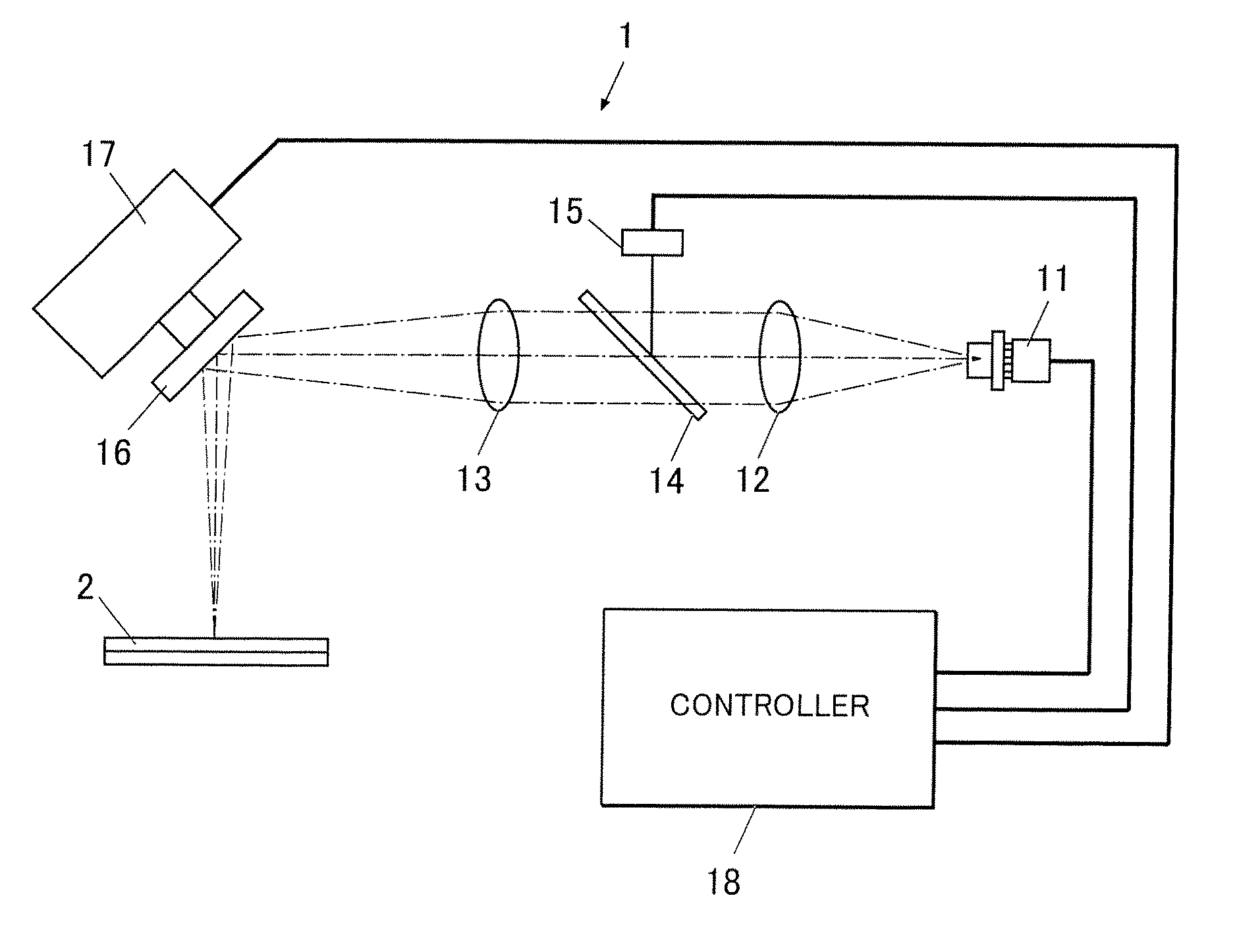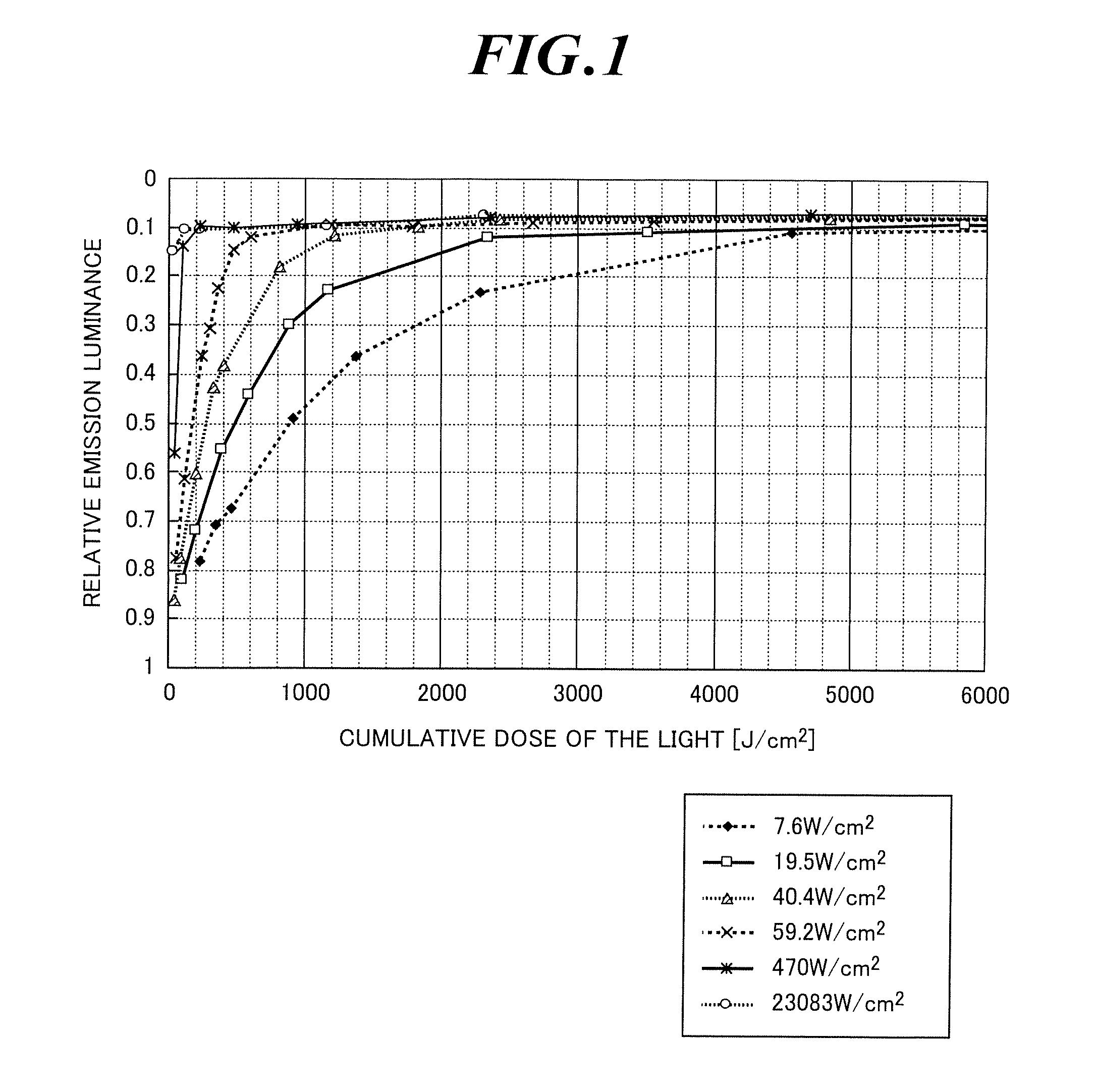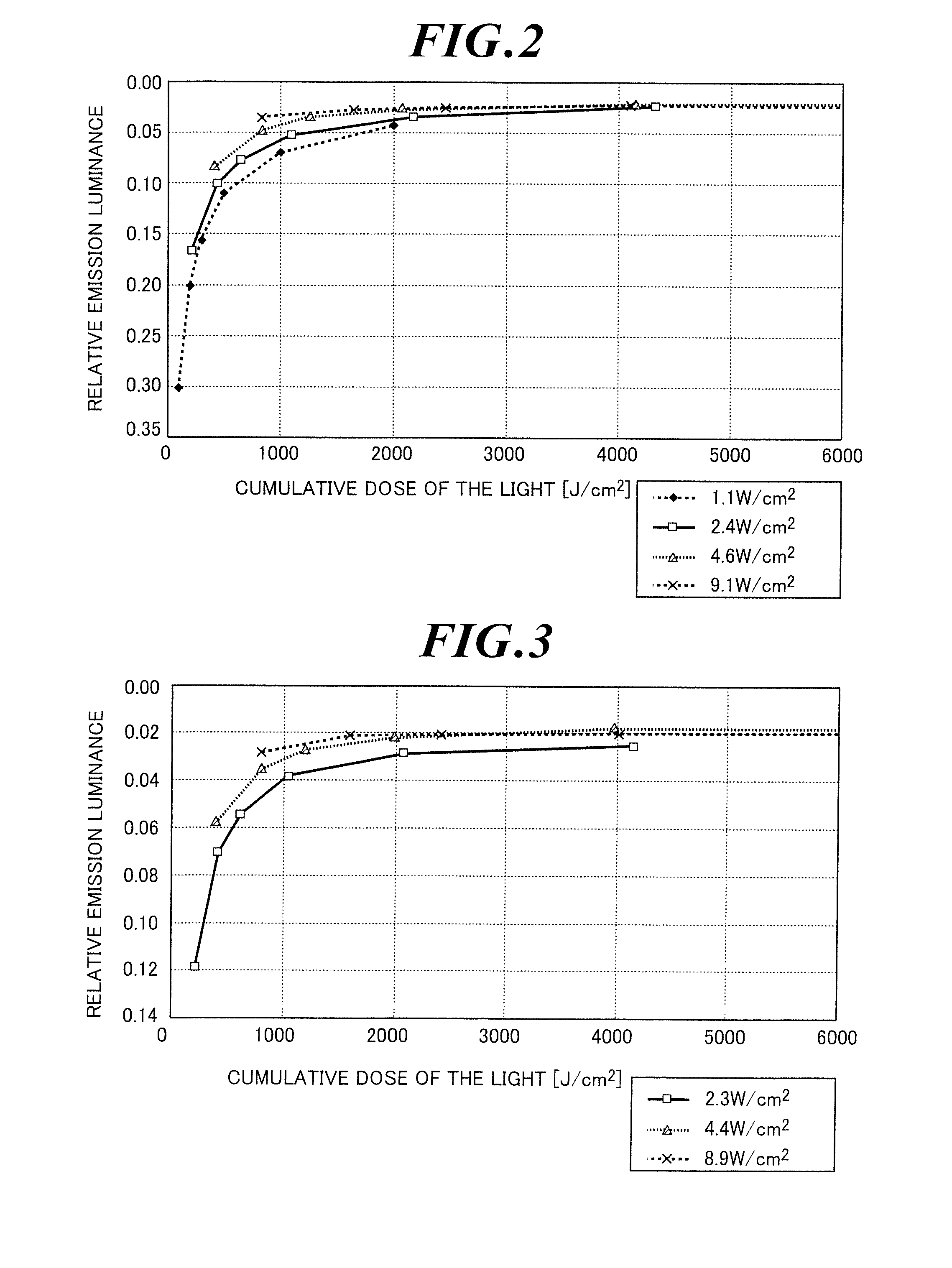Method for forming pattern of organic electroluminescent element
a technology of electroluminescent elements and organic el elements, which is applied in the direction of electroluminescent light sources, electric lighting sources, solid-state devices, etc., can solve the problems that the irradiation of organic el elements with focus on only cumulative doses may not yield emission patterns, and achieve the effect of efficient patterning
- Summary
- Abstract
- Description
- Claims
- Application Information
AI Technical Summary
Benefits of technology
Problems solved by technology
Method used
Image
Examples
Embodiment Construction
[0032]In the method according to one or more embodiments of the invention, an emission pattern is formed under control of at least one of the light intensity and exposure time as variable factors during light irradiation on the basis of reciprocity failure characteristics involving the modification of the function of an organic functional layer due to light irradiation.
[0033]According to one or more embodiments of the invention, an emission pattern may be formed under control of at least one of the light intensity and exposure time on the basis of reciprocity failure characteristics determined through preliminary measurements of the mutual relationship between the modified level of the function of the organic functional layer due to light irradiation and the at least one of light intensity and exposure time. Through such a process, the light intensity and exposure time can be appropriately determined in accordance with predetermined emission luminance levels so as to form a precise ...
PUM
 Login to View More
Login to View More Abstract
Description
Claims
Application Information
 Login to View More
Login to View More - R&D
- Intellectual Property
- Life Sciences
- Materials
- Tech Scout
- Unparalleled Data Quality
- Higher Quality Content
- 60% Fewer Hallucinations
Browse by: Latest US Patents, China's latest patents, Technical Efficacy Thesaurus, Application Domain, Technology Topic, Popular Technical Reports.
© 2025 PatSnap. All rights reserved.Legal|Privacy policy|Modern Slavery Act Transparency Statement|Sitemap|About US| Contact US: help@patsnap.com



